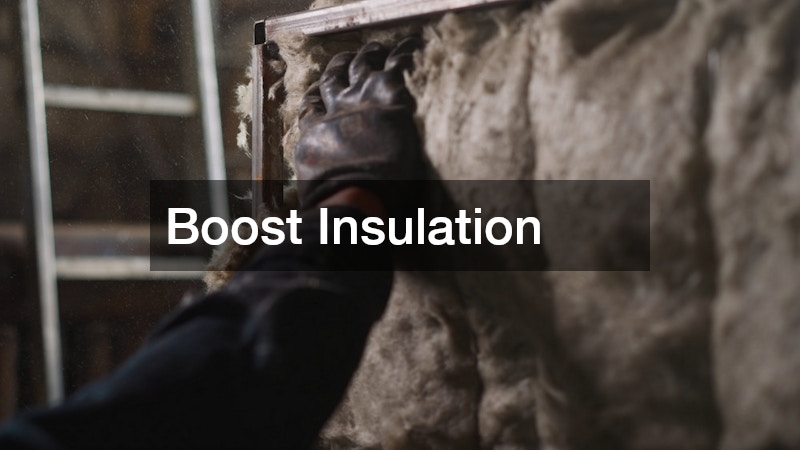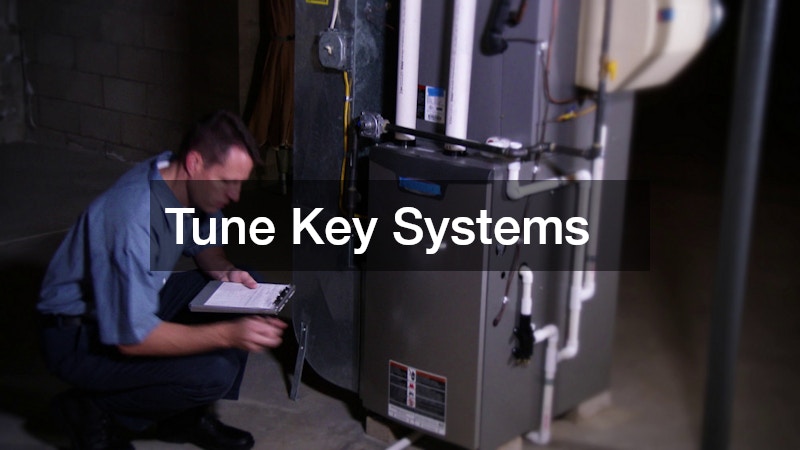2. Seal Air Leaks
Air leaks in walls, foundations, ceilings, and even electrical penetrations can silently raise energy costs without showing obvious signs. These small pathways allow air to flow freely in and out of the home, forcing systems to work overtime to maintain comfort and resulting in higher energy bills each season. Addressing these hidden leaks is an important part of keeping a household efficient and stable.
A local hvac company often performs a blower door test to uncover these unseen issues. This process exposes airflow patterns and reveals the areas most in need of sealing, helping homeowners prioritize improvements based on impact. Once targeted leaks are filled or sealed, temperature control becomes much more predictable and efficient.
Additional enhancements such as outlet gaskets, foundation sealing, and attic air barriers further reduce unnecessary heat movement. These upgrades support the home’s overall structure, making temperature retention easier and helping homeowners stay comfortable with fewer equipment cycles. Over time, sealing air leaks forms a strong foundation for a more energy-efficient home.
3. Boost Insulation

Insulation determines how well a home can maintain temperature control, yet many households still operate with outdated or inadequate materials. Without proper insulation, conditioned air escapes freely, causing systems to run longer and increasing energy bills throughout the year. Ensuring the home is properly insulated is one of the most impactful steps every homeowner can take.
During a home renovation, upgrading insulation is often one of the most cost-effective structural improvements. Specialists may remove old insulation, install fresh updated materials, or reinforce areas that were previously overlooked. Attics and crawl spaces are common weak points, and addressing them first can lead to immediate improvements in comfort.
Modern insulation options include spray foam, dense-pack cellulose, and multi-layer reflective products that offer superior temperature control. These materials help stabilize interior environments by reducing heat transfer, making seasonal comfort significantly easier to manage. With improved insulation, the home becomes more resilient and efficient, lowering long-term operational costs.
4. Upgrade Lighting
Lighting contributes more to home energy use than many people realize, especially in properties that still rely on outdated bulb technology. By replacing older light sources with more efficient options, homeowners can instantly reduce energy bills without major renovations. Even small lighting adjustments can create long-term benefits when managed thoughtfully.
During a home remodeling project, many designers recommend switching to LED lighting because it consumes far less power and lasts much longer than older bulbs. Integrated lighting systems, smart switches, and automated controls further enhance efficiency by reducing excessive use. These upgrades allow homeowners to manage light output, timing, and overall energy consumption more effectively.
Adding dimmers, occupancy sensors, and daylight-responsive controls further refines lighting efficiency. These tools ensure that lights operate only when necessary and at appropriate brightness levels. Together, these adjustments provide immediate savings while modernizing the home’s overall lighting environment.
5. Tune Key Systems

Mechanical components in the home directly influence efficiency, yet they are often overlooked until problems appear. When equipment such as heating, cooling, or ventilation systems falls out of tune, they require more energy to perform the same tasks, increasing energy bills. Regular system evaluations provide long-term stability and improved daily performance.
A general contractor overseeing a home project may identify outdated parts, inconsistent operation, or neglected maintenance needs. During larger improvement jobs, they can assess how well the home’s systems are functioning and whether adjustments could enhance efficiency. Their broader perspective helps ensure each component supports the home’s overall performance.
Routine tune-ups involve cleaning internal parts, calibrating system controls, and replacing filters that restrict airflow. These small actions help equipment run more smoothly and with less power, extending its lifespan while improving comfort. Consistent maintenance reduces waste and prevents costly breakdowns.
6. Improve Windows
Windows are a major factor in home temperature management, especially if they have worn seals, cracked panes, or loose frames. When windows fail to perform properly, conditioned air escapes and outside temperatures infiltrate the home, leading to higher energy bills. Addressing window weaknesses is an essential step toward year-round efficiency.
A specialist experienced in window repair can identify areas where glass, framing, or sealant has deteriorated. By restoring these components, they improve the window’s ability to block heat transfer and maintain stable indoor conditions. This work also prolongs the life of the window and enhances comfort.
Supplemental improvements such as adding insulating curtains, applying window film, or reinforcing exterior caulking create additional layers of efficiency. These enhancements help the home retain warmth in winter and remain cooler in summer. Together, repairs and supplemental upgrades greatly improve long-term temperature stability.
7. Replace Old Panes

Aging windows often lack the insulation power and performance needed for modern efficiency expectations. Replacing outdated or damaged windows helps reduce heat loss, improve comfort, and lower energy bills throughout the year. When windows reach the end of their lifespan, upgrading becomes one of the most effective ways to increase home efficiency.
Window replacement introduces advanced materials designed to improve thermal balance. Double- and triple-pane options, low-emissivity coatings, and insulated frames all contribute to better temperature retention. These improvements help maintain stable indoor conditions during extreme weather and reduce the strain on heating and cooling systems.
Upgrading windows can also improve noise control, enhance curb appeal, and strengthen the home’s value. Combined with improvements to insulation and air sealing, replacement windows make the home significantly more efficient and easier to maintain. These upgrades are long-lasting and provide reliable savings over time.
8. Mind the Roof
The roof plays a key role in shielding the home from outdoor temperatures. When it becomes worn or damaged, heat can escape through openings, weakening indoor comfort and increasing energy bills. Maintaining a strong, insulated roof is crucial for year-round efficiency.
Roof repair services can address missing shingles, damaged flashing, or deteriorating underlayment that allows air movement into the home. Repairing these areas ensures that the roof functions as a protective barrier against heat transfer. A properly maintained roof supports consistent indoor temperatures and reduces pressure on major systems.
Additional improvements such as adding radiant barriers, improving attic ventilation, or reinforcing insulation further strengthen roof performance. These upgrades help regulate heat movement and create a more stable interior environment. A well-maintained roof remains one of the most valuable contributors to efficiency.
9. Check Wiring
Electrical systems influence energy use more than most homeowners realize. Outdated wiring, overloaded circuits, and malfunctioning connections can increase power consumption and cause higher energy bills. Ensuring the electrical system operates efficiently is essential for a modern home.
Electrical repairs often involve correcting faulty connections, updating aged wiring, and improving circuit distribution for balanced load management. These upgrades help prevent unnecessary electrical waste and ensure that household appliances run at optimal efficiency. Proper electrical maintenance also enhances safety and reliability.
Adding surge protection, updated breakers, or modern electrical panels further boosts efficiency. These improvements ensure the system operates smoothly while minimizing energy loss. A well-maintained electrical system supports the entire home’s performance.
10. Maintain Hot Water
Hot water systems account for a significant portion of household energy use, especially when they begin to age or malfunction. Sediment buildup, temperature inconsistencies, or worn parts can cause systems to use more power and increase energy bills. Maintaining the hot water system is essential for everyday efficiency and comfort.
Water heater repair services typically include checking heating elements, flushing sediment, and ensuring that temperature controls work properly. These steps restore efficiency and help the unit use less power to heat water. A well-maintained system reduces unnecessary strain and extends equipment lifespan.
Additional improvements such as insulating the tank, adding pipe insulation, or installing low-flow fixtures further minimize waste. These enhancements help the system operate smoothly while supporting long-term household efficiency. Keeping the hot water system in good condition is one of the easiest ways to reduce overall energy use.
Reducing household expenses begins with understanding how your home uses and loses energy, and the steps you take to improve efficiency can create meaningful long-term results. By recognizing the impact of drafts, insulation gaps, outdated lighting, and aging components, homeowners gain clear insight into which areas deserve immediate attention. Each improvement supports the broader goal of managing energy consumption more effectively, creating a home that functions smoothly and predictably throughout every season. Making small adjustments today ultimately leads to stronger performance, lower operational strain, and a more comfortable living environment.
Evaluating windows, roofing, mechanical systems, and electrical components further strengthens the home’s ability to maintain stable indoor conditions. When these elements are updated or properly maintained, the home becomes significantly easier to regulate, even during periods of extreme weather. This supports consistent comfort and reduces unnecessary fluctuations in monthly costs. Homeowners who take a proactive approach to maintenance benefit from equipment that lasts longer, operates more smoothly, and performs at a higher level throughout its lifespan.
Managing water heating, sealing air leaks, reinforcing insulation, and upgrading outdated systems all contribute directly to reducing energy bills. Each section of this article outlines how specific improvements help enhance comfort and drive efficiency, allowing homeowners to create a well-balanced environment with greater control over indoor temperatures and energy consumption. Following these practical steps helps reduce waste, limit system strain, and support the long-term health of the home.
The strategies outlined in these 10 Tips for Saving Money on Your Energy Bills offer a clear roadmap for achieving a more efficient, comfortable, and cost-effective home. By taking a thoughtful, step-by-step approach, homeowners can transform their living spaces into high-performing environments that support both daily comfort and long-term savings.




